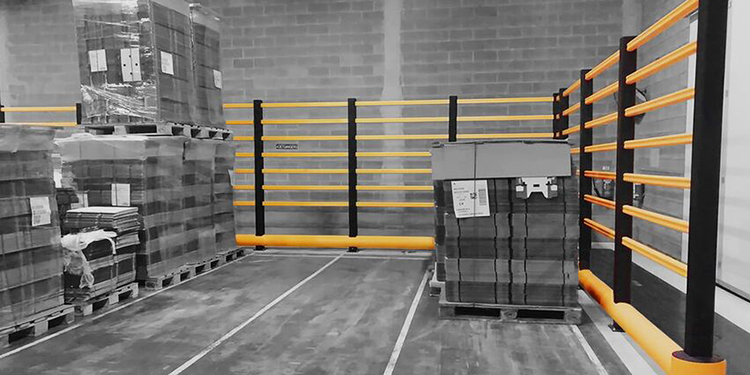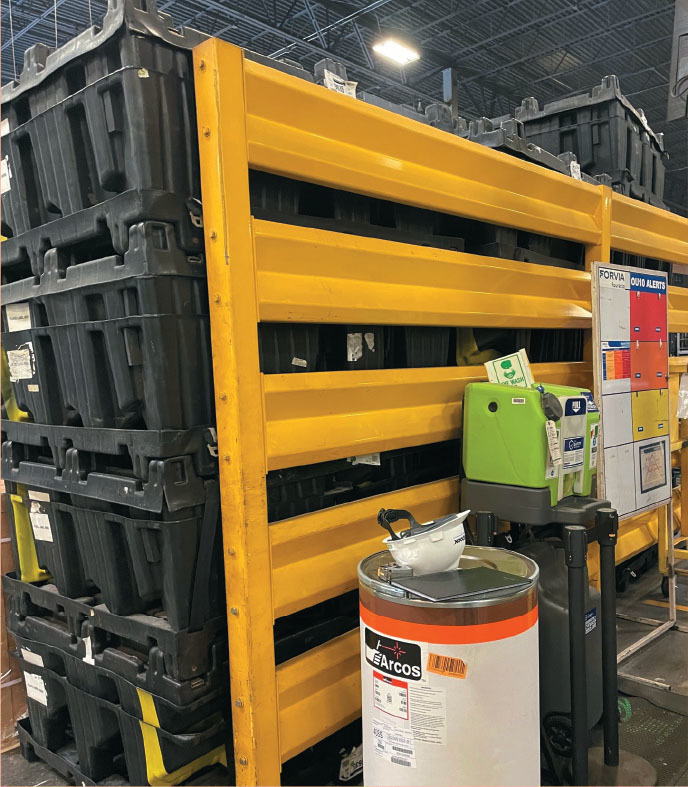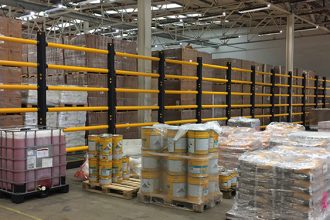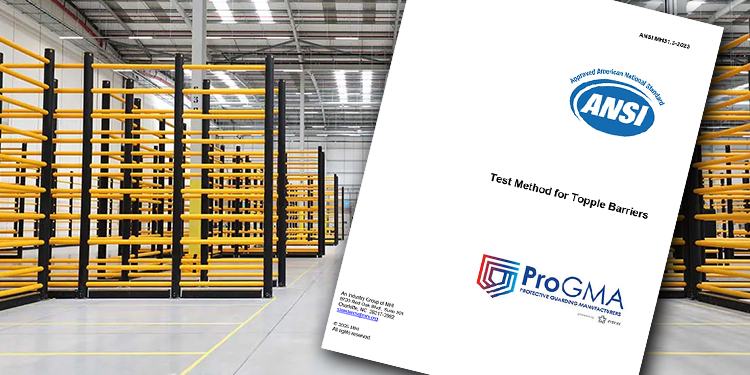
The Protective Guarding Manufacturers Association (ProGMA), an industry group of MHI, has released a new American National Standard — ANSI MH31.3-2025: Test Method for Topple Barriers. The standard creates the first consistent and repeatable method to test how topple barriers perform in warehouses and other material handling spaces.
Why the Standard Was Needed
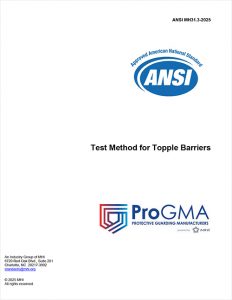 Warehouses are growing taller. As storage gets denser, floor stacked products are rising higher. That, in turn, increases the chance of collapse. Topple barriers protect workers, equipment, and inventory from unstable or leaning loads. Their placement often separates floor-based storage and staging areas from walkways and other areas where personnel and equipment are at risk.
Warehouses are growing taller. As storage gets denser, floor stacked products are rising higher. That, in turn, increases the chance of collapse. Topple barriers protect workers, equipment, and inventory from unstable or leaning loads. Their placement often separates floor-based storage and staging areas from walkways and other areas where personnel and equipment are at risk.
“Warehouses are going up instead of out. That means you’ve got huge stacks of product that can fall and hurt someone or damage something. Topple protection creates a barrier that catches the product before it comes down,” said Kyle Nobile, engineer at 4Front Engineered Solutions, a ProGMA member company. Nobile also serves as ProGMA’s Chair and leads its Engineering Committee, which develops the ANSI standards.
Before this standard, no common testing method existed, he continued. “Manufacturers used their own procedures, making comparisons difficult. ProGMA developed ANSI MH31.3 to close that gap. It gives everyone a single, reliable way to measure topple barrier performance.”
What the Topple Barriers Standard Covers
ANSI MH31.3 outlines how to test a topple barrier’s ability to resist horizontal loads from falling or leaning materials. It applies to both rigid (steel) and flexible (polymer) designs. The results provide manufacturers and users with clear, repeatable data on how a topple barrier will perform in real-world conditions.

The standard includes two key tests:
- Creep and Recovery Test: This procedure applies a constant load for 16 hours to determine how much the barrier bends. It also measures how well it returns to its original position and shape 12 hours after the load is gone.
- Rated Load Capacity Test: Tests how much a barrier bends when it reaches its rated capacity, ensuring it stays secure and intact. The testing procedure gradually increases force in 10% increments to determine the maximum deflection and load resistance.
“The standard gives manufacturers and buyers the same playbook,” said Nobile. “Steel barriers might not move much under load. Flexible barriers bend and then return to shape. Now, both types can be compared side-by-side with real test data.”
The standards call for the testing to occur on standard concrete floors under controlled conditions. It also provides guidance for using calibrated equipment to ascertain both the applied force and the barrier’s horizontal movement. The document further explains how to measure deflection, record data, and report results. The goal, continued Nobile, is to establish consistent, transparent testing that anyone can verify.
What MH31.3 Means for End Users
Manufacturers run the tests, but end users benefit, explained Nobile. Warehouse and safety managers considering different topple barriers can now ask a simple question: Was this product tested to ANSI MH31.3?
“This standard lets customers make informed choices,” he said. “Before, they had to take the manufacturer’s word that the product would perform as expected. Now they get a test report that proves performance.”
The results also help match barriers to the right application. “If a flexible barrier bends 24 inches and an operation has the space to accommodate the deflection, great,” Nobile added. “If a walkway is tight and can’t allow that movement, pick a rigid option instead. The data shows exactly how each one behaves.”
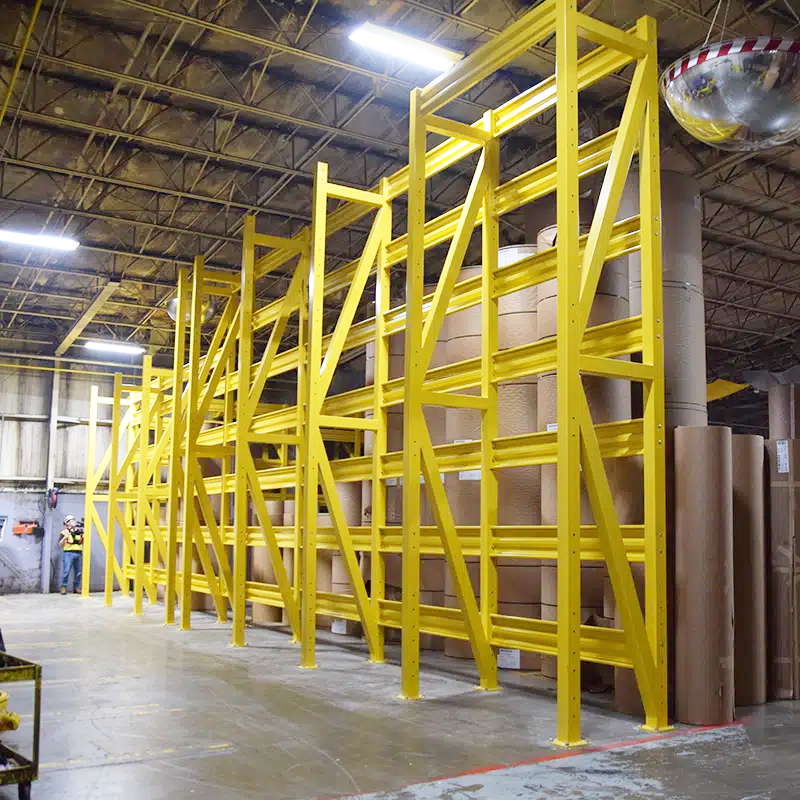
How to Access the Topple Barriers Standard
ANSI MH31.3: Test Method for Topple Barriers is available for purchase through MHI and ProGMA, Nobile noted. In addition, ProGMA offers two other ANSI standards to strengthen warehouse safety:
- MH31.1 establishes a uniform test method for evaluating steel mesh containment panels used in pallet rack and warehouse applications. The standard defines how to measure a panel’s strength, deflection, and connection integrity when subjected to impact or load forces from falling products. By providing a consistent, repeatable testing procedure, MH31.1 helps manufacturers validate performance claims. This gives end users confidence that containment systems will safely prevent materials from falling into work areas or aisles.
- MH31.2 sets a consistent test method for industrial guardrails and barriers used in warehouses and manufacturing environments. The standard defines how to measure impact resistance, energy absorption, and deflection when moving equipment or vehicles strike a barrier. It allows manufacturers to verify product performance under controlled conditions. The standard ensures end users can attain reliable data to compare systems and choose the right level of protection for people, equipment, and infrastructure.
“ProGMA’s standards provide the testing details manufacturers need to deliver the performance data end users can trust,” he concluded.
For more information or to get a copy of the new standard, visit www.mhi.org/progma.


